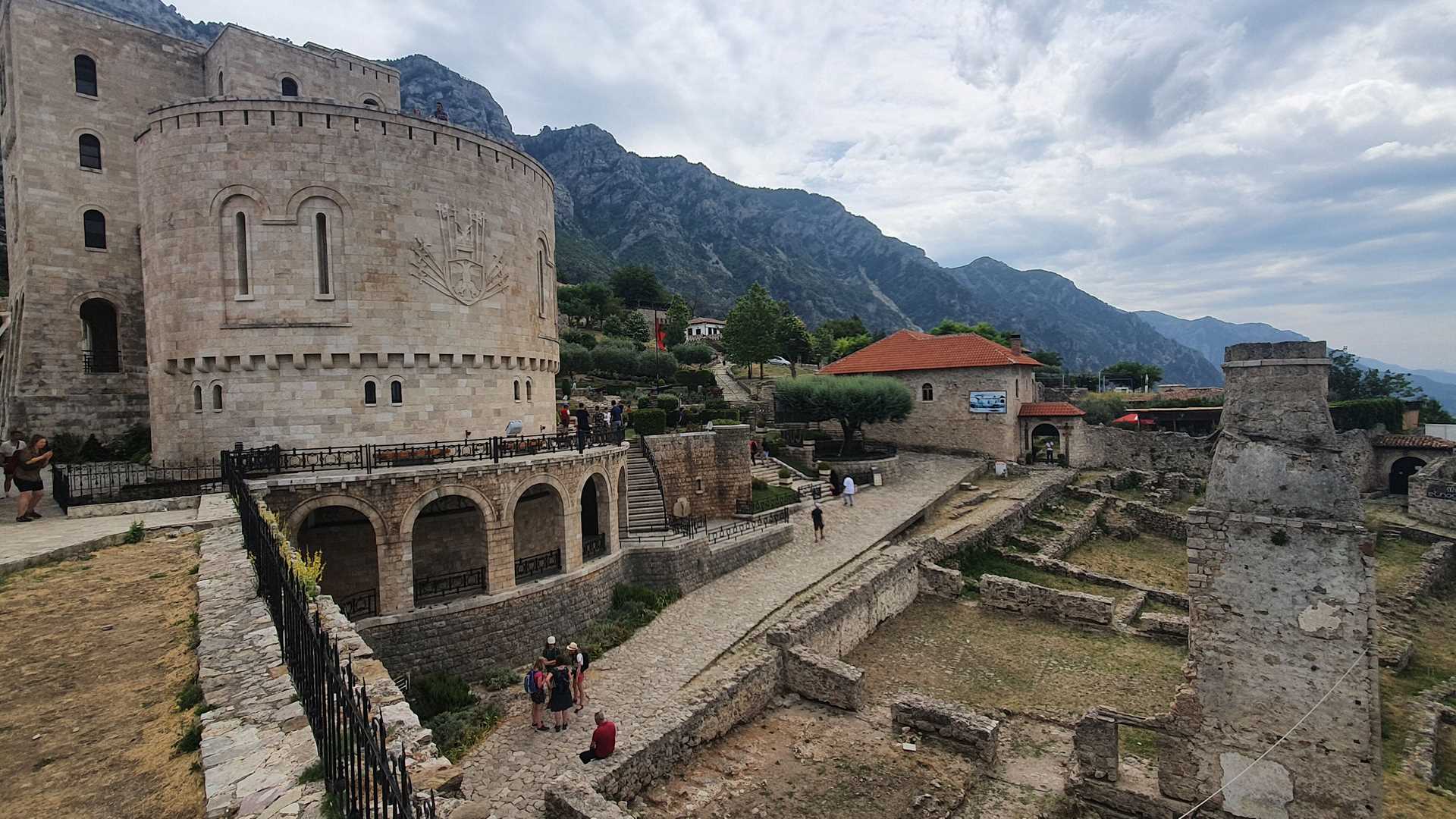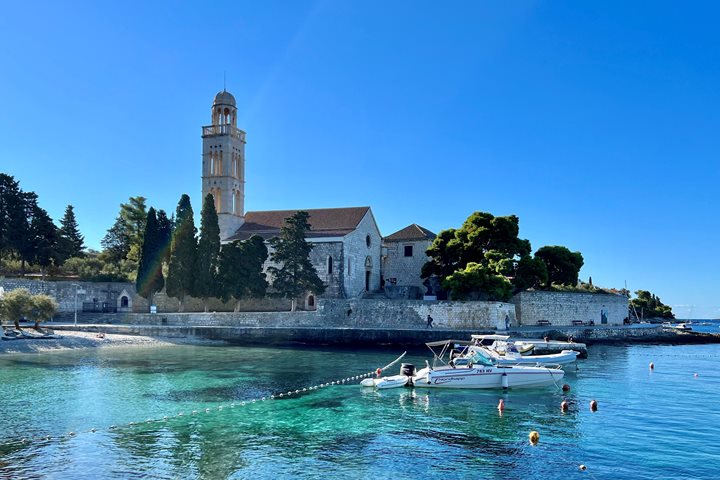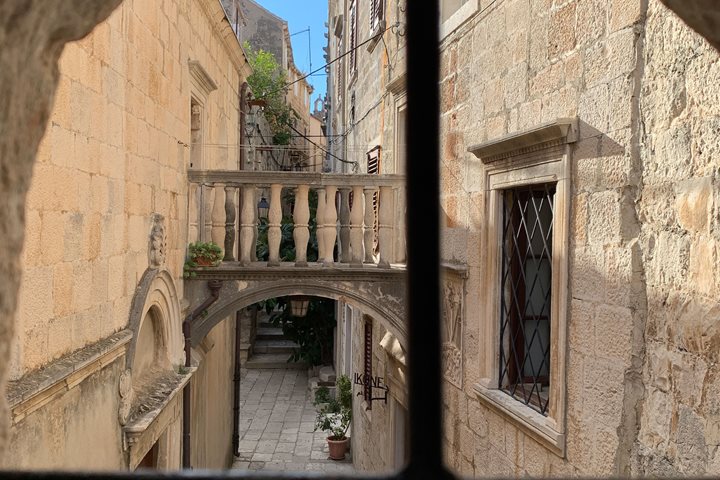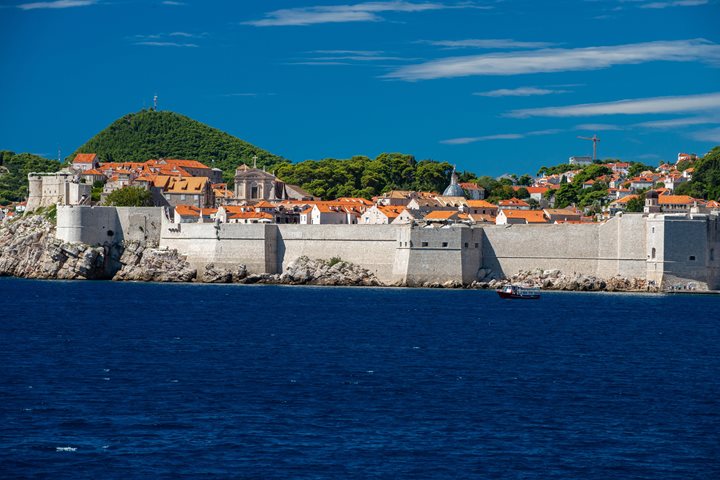Today we made our first explorations into Albania, a formerly communist country that was also subject to the Ottomans throughout the early modern period. In the morning, we docked at Durres, Albania’s largest port and main conduit for cargo and shipping containers. Durres, known as Dyrrachium in the Roman Era, was also an important node for shipping across the Adriatic to Southern Italy throughout antiquity. Disembarking, we took buses inland towards the old capital of Kruje, set amidst the country’s rugged limestone mountains.
Kruje was the capital of Albania’s first independent state, and it was also the center of resistance efforts led by Georgi Kastrioti against the Ottoman Empire. Its impressive fortifications, coupled with a prominent location along a ridgeline, helped Kastrioti “Skanderbeg” fight off numerous Ottoman invasions during the mid-15th century. The site is now home to a purpose-built museum to promote the story of an Albanian national hero.
Around the foot of the castle, we walked through a Turkish-style village lane with wooden architecture and rustic limestone cobblestones paving the street. A variety of traditional art pieces and handicrafts were on display.
For lunch, we enjoyed a traditional Albanian meal at Bardhi restaurant, which serves fresh produce from farm to table. We started with a range of spinach pies, cheeses, and roasted vegetables before the main course of slow-roasted lamb and potatoes. All washed down with a selection of regional wines. Before we departed, we were treated to a performance of traditional Albanian folkdance. In colorful attire and accompanied by joyful music, the dancers and musicians put on a show that had us clapping and singing along.







